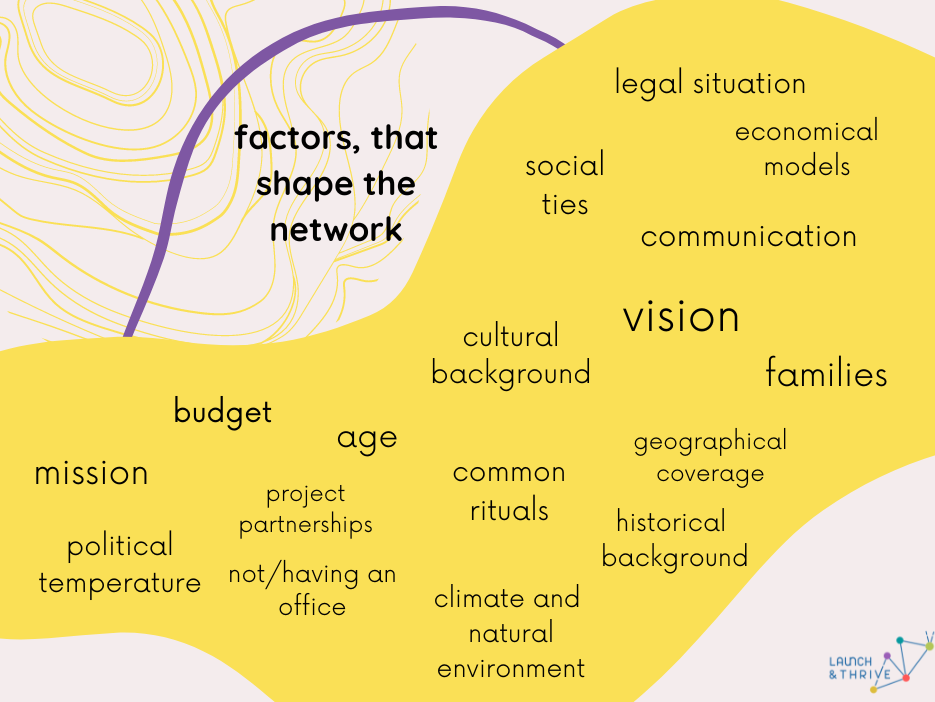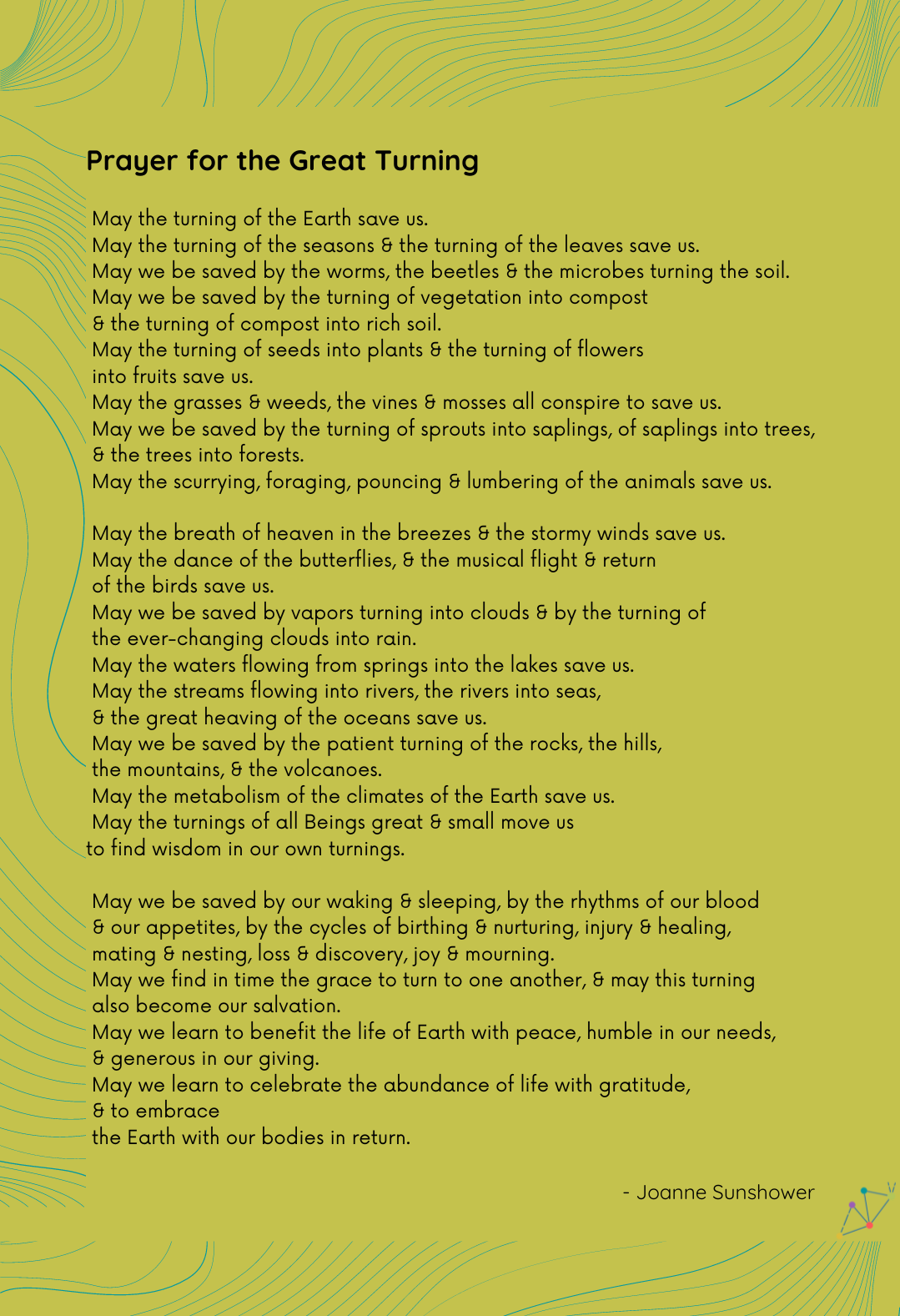Launch & Thrive rationale
| Site: | GEN Europe's learning platform |
| Course: | Launch & Thrive Online Learning Package |
| Book: | Launch & Thrive rationale |
| Printed by: | Guest user |
| Date: | Tuesday, 28 October 2025, 9:01 AM |
Description

1. How the story begins...
Once upon a time, in a world yearning for stronger community connections, a group of visionaries embarked on a mission to create a rich know-how treasure box. They envisioned a world where individuals and organizations could build thriving ecovillage networks, fostering sustainable and regenerative living. With this vision in mind, they set out to create an Online Learning Package (OLP) which is part of a project Launch&Thrive: Awakening the Networks.
Launch&Thrive was designed to be more than just an educational course; it was a transformative journey that empowered individuals to turn their dreams of sustainable living into reality. As the group built Launch&Thrive, they crafted a narrative that unfolded step by step, each phase representing a crucial aspect of launching and thriving in a national ecovillage network.
In this OLP, learners are invited on a transformative journey that embraces different methods of organising and understanding the steps of the network's development. Each step brings us closer to embodying sustainable and interconnected ecovillage networks. Through this learning course, individuals can become empowered change agents, equipped with the knowledge, resources, and connections to make a tangible difference in their communities and create a flourishing future for all.
Have you ever asked yourself...
What is a network then? It might be confusing!
We invite you to reflect on the notion and see within yourself: what is a network FOR YOU.
To approach a bit more networks that exist in the world we provide below some factors which we identified as the components influencing the character and development of a network.
Together, these elements converge in a mesmerizing tableau, bringing us closer to the essence of the network.

What seems very common for all networks is that it is a dynamic, interconnected whole—a living, breathing organism to the power of unity, knowledge, culture, resilience, and shared roots.
2. Networking in the modern world

More and more people are starting to think systemically and through networks and connections. Complexity science, network theory and ecological-social resilience are among the most dynamically developing fields of study. However, due to the long-term impact of techno-driven culture and simplifications, public policies and the economy still work as if reality were a linear, mechanical and predictable phenomenon, summarized in balancing mechanisms. Such a mentality will make economists, leaders and societies of the future very ill-prepared to deal with the complexity of the modern world. This is why it’s crucial to turn our attention to networking and methods to sustain future cooperation within the system of ecovillages and regenerative communities as well as between researchers, society and ecovillage networks.
3. Networks vs. crisis
We have a bunch of measures showing us about the situation in the world in many dimensions. The IPCC scenario is telling us about climate change. The social crisis is visible in migration, economic crisis poverty and unemployment rates. All are part of the same crisis: the crisis of values and relations. Each “separate crisis” intensifies the effects of the other one.
The divided, individualistic society and competitive, capitalistic approach to organizing needs reconstruction and replacing it. The alternatives are the models that aim to regenerate our planet's biodiversity, cooperation and resilience. Applying system thinking might provide solutions to wicked, systemic problems.
Network resilience is the ability to prepare for anticipated hazards, adapt to changing conditions, and withstand and recover rapidly from disruptions. Measures, such as disaster preparedness—which includes prevention, protection, mitigation, response and recovery—are vital steps to resilience. Adding the network notion of resilience would mean that we consider the connections between the communities and their ability to collaborate, share and raise their resilience.
We would like here to provide an overall framework for understanding the creation and strengthening of the networks with the community and network resilience in the background.

4. Poem for the Great Turning

5. Useful resources
Inspiring videos:
the Great Turning: https://www.filmsforaction.org/watch/the-great-turning-joanna-macy-sea-to-seed/
Lines and Pathways: https://www.filmsforaction.org/watch/being-outside-changes-how-you-think/
Recommended reading:
- People and Permaculture by Looby Macnamara
- Patterns of Connection: Essential Essays from Five Decades by Fritjof Capra
- Active Hope: how to face the mess we're in without going crazy by Joanna Macy and Chris Johnstone
- Ecology, Community and Lifestyle: Outline of an Ecosophy by Arne Næss
- Braiding Sweetgrass: Indigenous Wisdom, Scientific Knowledge, and the Teachings of Plants by Potawatomi professor Robin Wall
- Communities for Future wiki
